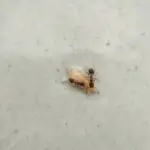How Fast Can Ants Reach Terminal Velocity?
Several factors contribute to ants’ ability to survive high falls. Besides their tiny size and light weight, they have an exoskeleton that helps them absorb some of the kinetic energy of a fall. Their chitin exoskeleton is highly durable and is a major contributor to their survival.
The size and shape of a falling object will also determine its terminal velocity. The larger the object, the higher its terminal velocity. Objects with regular shapes have higher terminal velocities than angular objects.
The force of gravity is also a factor in determining a fall’s terminal velocity. A larger gravity force can overcome air resistance, meaning a heavier object will have a higher terminal velocity. If the fall is from a large surface, the surface type is also important.
Air resistance is also a factor in determining ants’ terminal velocity. The small size and weight of the ant causes strong air resistance, meaning the ant will fall slower.
The size of an ant’s body and the shape of its legs also contribute to its terminal velocity. The exoskeleton around the ant’s body is deformable, so the impact will be spread over several layers. This helps to ensure that the ant does not hurt when it falls.
Finally, ants’ low mass and small size means they will not sustain any damage from a high fall. They are also hit-resistant, so the impact will be minimal.
Terminal velocity is the fastest speed an object can travel through the air. An ant’s terminal velocity depends on several factors, including its size, shape and projected shape.








